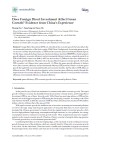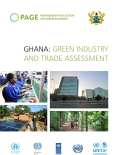
Foreign Direct Investment (FDI) not only affects the economic growth but also affects the environmental protection of the host country. With China’s background of pursuing green growth, we need to consider the performance of FDI from the economic and environmental benefit aspects. On this basis, using slacks-based measure directional distance function (SBMDDF) to build up green growth efficiency, economic efficiency and environmental efficiency indexes, empirical research on FDI in 104 Chinese cities from 2004 to 2011 has shown that: (1) Different cities have differences in their green growth efficiency. Shenzhen city is always efficient in green economic growth. (2) Overall, FDI is positive on Chinese cities’ green growth. (3) When the green growth efficiency is broken down into economic efficiency and environmental efficiency, FDI promotes China’s economic green growth through both environmental benefits and economic benefits. (4) The effect of FDI differs in different sectors. FDI in the emission-intensive sector promotes green efficiency mainly through the improvement of economic efficiency.

This report presents the current progress of Italy towards a green economy. It provides a clear overview of the diffusion of green businesses and practices within the manufacturing, building and trade industries, and the primary and tertiary sectors. The report highlights that about 40% of Italian firms are either:
- Core Green (i.e. firms that produce environmental goods and services, or firms whose outputs have low environmental impact); or
- Go Green (i.e. firms that are taking steps towards the greening of their supply chains and business practices).
Additionally the report offers an overview of the modern state of some themes which are strategically important for the transition to a green economy in Italy. In specific the report analyses the diffusion of renewable energy technologies, the improvements in energy efficiency, the reduced emissions of pollutant gases, circular economy, eco-innovation, land and natural resources management, ecological agriculture and sustainable transport.


The ninth annual State of Green Business report continues the tradition of opening a window into how, and how much, companies are improving their environmental performance and how much their efforts are making a difference. It looks at both common measures (energy, waste and carbon) and some less-common ones (for example, company's low carbon investments over the past five years).
The report also discusses 10 top sustainable trends in circular economy, technology and supply chain, green infrastruture and mining practices, as well as carbon recycling and green jobs among others to highlight future green opportunities for businesses. Moreover, it provides a quantitative view of corporate performance, leadership, and market drivers.
